Reserve Rights - A Stablecoin for the People
In the ever-evolving world of cryptocurrency, the emergence of stablecoins has sparked a revolution in how we perceive and utilize digital currencies. Among these innovative financial instruments, Reserve Rights stands out as a beacon of hope for individuals and communities seeking economic stability and empowerment. Imagine a currency that not only retains its value but also promotes financial inclusion and democratizes access to financial services. This article will delve into the intricacies of Reserve Rights, exploring its features, benefits, and the profound impact it could have on the cryptocurrency landscape.
Before we dive into the specifics of Reserve Rights, let's set the stage by understanding what stablecoins are. At their core, stablecoins are cryptocurrencies designed to maintain a stable value against a fiat currency, such as the US Dollar. This stability is crucial, as it allows users to avoid the notorious volatility that characterizes many cryptocurrencies. Think of stablecoins as the calm harbor amidst a stormy sea of price fluctuations. They serve as a reliable medium of exchange, a store of value, and a unit of account, making them essential in the digital economy.
Now, let’s focus on Reserve Rights, a project that aims to create a stable, decentralized financial system. Unlike traditional stablecoins that rely on a central authority, Reserve Rights operates on a decentralized framework, giving power back to the people. The unique features of Reserve Rights include a dual-token system and a robust governance model that encourages community participation. This innovative approach not only fosters trust but also ensures that users have a say in the future of their financial ecosystem.
The mechanics of Reserve Rights hinge on its dual-token system, which consists of the Reserve Token (RSV) and the Reserve Rights Token (RSR). The RSV is pegged to a basket of stable assets, ensuring its value remains stable, while the RSR acts as a governance token that allows holders to participate in decision-making processes. This symbiotic relationship between the two tokens is designed to maintain stability and foster a resilient financial environment. By understanding how these tokens function together, users can appreciate the innovative design behind Reserve Rights.
Understanding the economic model of Reserve Rights is crucial for grasping its potential. The supply and demand dynamics of both RSV and RSR play a significant role in maintaining stability. As demand for RSV increases, the system can mint more tokens to meet this demand, ensuring users have access to a stable asset. Conversely, RSR holders can incentivize the stability of RSV by participating in governance and decision-making processes. This intricate tokenomics model not only promotes sustainability but also encourages user engagement.
In decentralized systems, governance is paramount. Reserve Rights incorporates community participation in decision-making through its governance model, allowing RSR holders to propose and vote on changes to the protocol. This democratic approach ensures that the interests of the community are prioritized, fostering a sense of ownership among users. Imagine being part of a financial system where your voice matters—this is the essence of governance within Reserve Rights.
Adopting Reserve Rights comes with a plethora of advantages. Here are some of the key benefits:
- Financial Inclusion: Reserve Rights aims to provide access to financial services for individuals who are unbanked or underbanked.
- Reduced Volatility: By maintaining a stable value, Reserve Rights protects users from the wild price swings often seen in the crypto market.
- User Control: The decentralized nature of Reserve Rights gives users more control over their assets, reducing reliance on traditional financial institutions.
Despite its potential, Reserve Rights is not without challenges. Regulatory hurdles, market competition, and technological limitations pose significant obstacles. Navigating these challenges will be crucial for the success of Reserve Rights in the competitive landscape of stablecoins.
The regulatory environment surrounding cryptocurrencies is constantly evolving. For Reserve Rights, understanding and adapting to these regulations is essential for long-term viability. As governments around the world grapple with how to classify and regulate stablecoins, Reserve Rights must ensure compliance while advocating for a favorable regulatory framework.
The stablecoin market is crowded with established players like Tether and USDC. Reserve Rights must carve out its niche by highlighting its unique features and benefits. By positioning itself as a decentralized alternative, it can attract users who prioritize autonomy and community involvement.
Looking ahead, the future of Reserve Rights appears promising. With increasing interest in decentralized finance (DeFi) and the growing demand for stable financial instruments, Reserve Rights is well-positioned to capture a significant share of the market.
Understanding adoption trends is crucial for predicting the success of Reserve Rights. Current user engagement and growth patterns indicate a rising interest in decentralized stablecoins, suggesting that Reserve Rights could see substantial adoption in the coming years.
Strategic partnerships can enhance the utility of Reserve Rights. Collaborations with other DeFi projects and platforms could drive its adoption and integration into existing systems, making it a more versatile option for users seeking stability in their financial transactions.
What is Reserve Rights?
Reserve Rights is a decentralized stablecoin designed to provide a stable financial instrument for individuals and communities.
How does Reserve Rights maintain stability?
It uses a dual-token system, with RSV pegged to stable assets and RSR serving as a governance token.
What are the benefits of using Reserve Rights?
Benefits include financial inclusion, reduced volatility, and enhanced user control over assets.
What challenges does Reserve Rights face?
Challenges include regulatory hurdles, market competition, and technological limitations.
What does the future hold for Reserve Rights?
The future looks promising with potential growth in adoption trends and strategic collaborations.
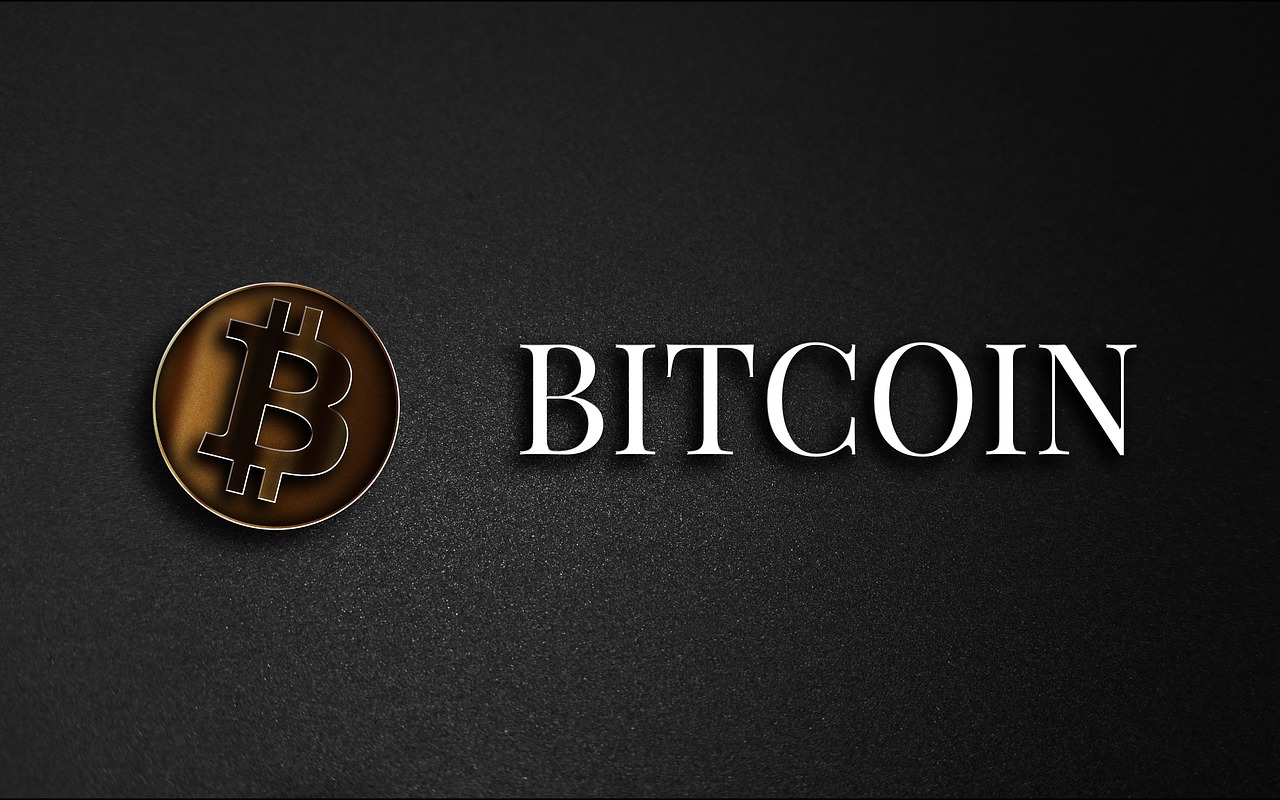
Understanding Stablecoins
Stablecoins are revolutionizing the way we think about digital currencies. Unlike traditional cryptocurrencies like Bitcoin or Ethereum, which can experience wild price swings, stablecoins are designed to maintain a stable value against a fiat currency, such as the US dollar. This stability is crucial, especially for those who want to engage in digital transactions without the fear of sudden price drops. Imagine trying to buy a cup of coffee with Bitcoin when its value fluctuates dramatically overnight; that’s where stablecoins come into play, offering a reliable alternative.
So, how do stablecoins achieve this stability? Most stablecoins are backed by reserves of assets, which can include fiat currencies, commodities, or even other cryptocurrencies. The goal is to create a digital currency that can be used for everyday transactions while minimizing the risks associated with volatility. For instance, if you hold a stablecoin pegged to the US dollar, you can expect that one stablecoin will always be worth approximately one dollar. This is achieved through various mechanisms, such as collateralization or algorithmic adjustments.
There are three main types of stablecoins:
- Fiat-Collateralized Stablecoins: These are backed 1:1 by a fiat currency held in reserve. Tether (USDT) and USD Coin (USDC) are prime examples.
- Crypto-Collateralized Stablecoins: These are backed by other cryptocurrencies, often over-collateralized to account for price volatility. DAI is a well-known example.
- Algorithmic Stablecoins: These rely on algorithms to control the supply of the stablecoin, adjusting it based on demand to maintain its peg. Examples include TerraUSD (UST).
Stablecoins play a pivotal role in the digital economy. They provide a bridge between traditional finance and the world of cryptocurrencies, allowing users to transact seamlessly without the fear of losing value. This is especially important for those in developing countries where access to stable banking systems is limited. By using stablecoins, individuals can participate in the global economy, send remittances, or make purchases online without the usual barriers.
Moreover, stablecoins are increasingly being adopted by businesses for various use cases, such as remittances, payments, and even as a means of raising funds through Initial Coin Offerings (ICOs). The potential for financial inclusion is immense, as stablecoins can provide access to financial services for the unbanked and underbanked populations around the world.
In conclusion, stablecoins are not just a passing trend; they represent a fundamental shift in how we think about money in the digital age. By maintaining a stable value, they offer a reliable medium of exchange and a store of value, making them an essential component of the evolving cryptocurrency landscape.
- What is a stablecoin? A stablecoin is a type of cryptocurrency designed to maintain a stable value against a fiat currency.
- How do stablecoins maintain their value? Stablecoins maintain their value through mechanisms like collateralization or algorithmic adjustments.
- What are the benefits of using stablecoins? They offer stability, reduce volatility, and provide access to financial services for unbanked populations.
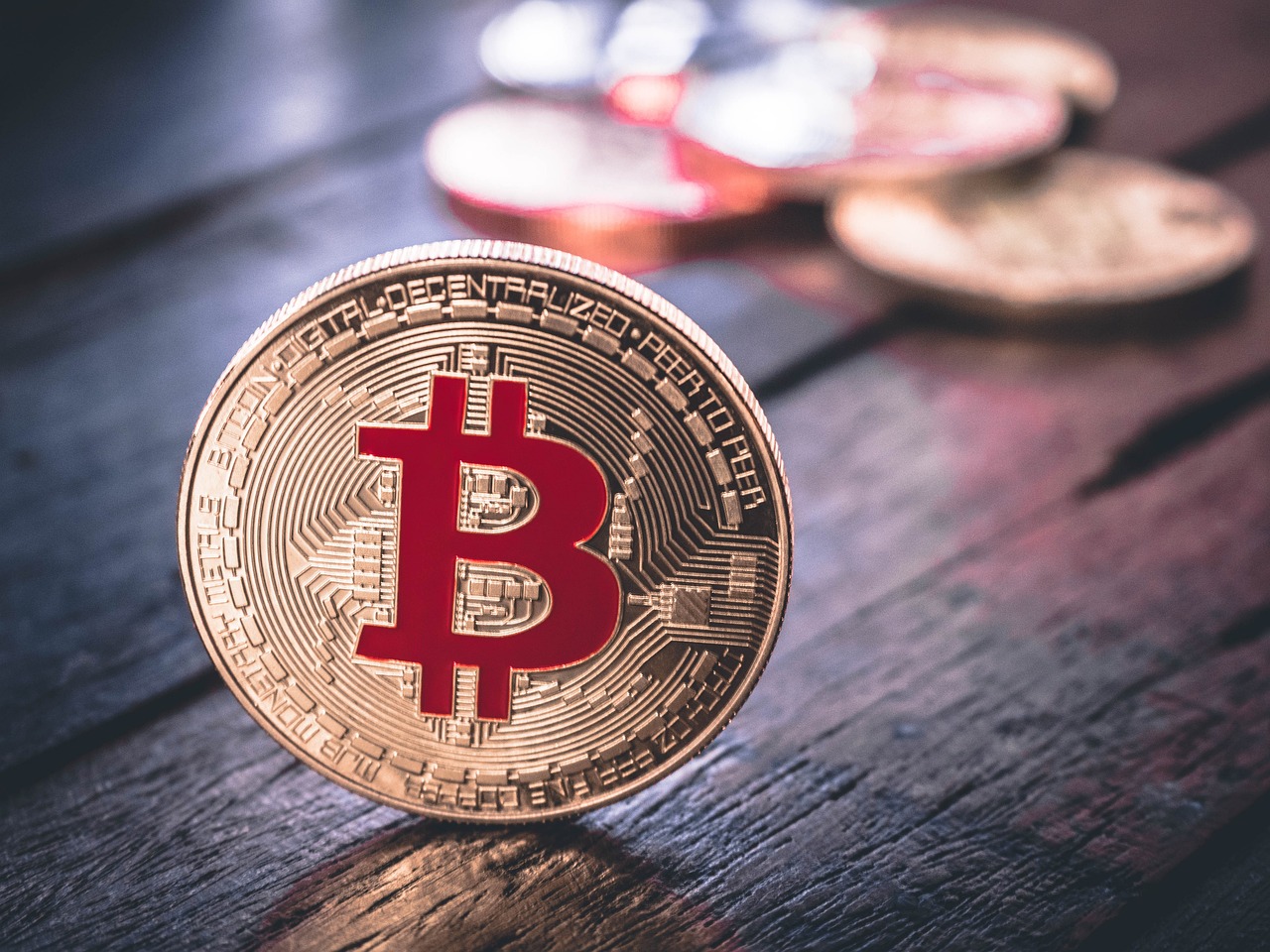
Overview of Reserve Rights
The world of cryptocurrency is evolving at a breakneck pace, and Reserve Rights is at the forefront of this transformation. Designed as a decentralized stablecoin, Reserve Rights aims to provide a financial instrument that is not only stable but also accessible to everyone, regardless of their economic background. Imagine a financial system where individuals have the power to control their wealth without the fear of volatility that often plagues traditional cryptocurrencies. That's the vision behind Reserve Rights.
At its core, Reserve Rights operates on a unique dual-token model, which is a key feature that sets it apart from other stablecoins. This model consists of two tokens: the Reserve Token (RSV), which is pegged to a basket of assets to maintain its value, and the Reserve Rights Token (RSR), which acts as a governance and utility token. The interplay between these two tokens is designed to create a robust ecosystem that fosters stability and growth.
One of the most exciting aspects of Reserve Rights is its commitment to decentralization. Unlike traditional financial systems that are often controlled by a handful of institutions, Reserve Rights empowers its users by allowing them to participate in decision-making processes. This means that holders of RSR have a say in the governance of the platform, ensuring that it remains community-driven and aligned with the interests of its users.
Furthermore, Reserve Rights is built on the principles of transparency and security. The technology behind it leverages blockchain's inherent qualities, providing users with a trustworthy platform where their assets are safeguarded. The decentralized nature of the system means that there is no single point of failure, making it resilient against attacks and fraud.
In summary, Reserve Rights is not just another stablecoin; it represents a shift towards a more equitable financial system. By combining innovative technology with a focus on community governance, Reserve Rights aims to democratize finance and provide individuals with the tools they need to thrive in the digital economy. As we delve deeper into how it works, you'll see how this revolutionary approach could change the way we think about money.

How Reserve Rights Works
At the heart of Reserve Rights lies a sophisticated yet elegant mechanism that ensures stability and decentralization through a dual-token system. This approach is akin to having a solid foundation beneath a towering structure; without it, the entire edifice would be at risk of collapsing. The two tokens involved are the Reserve Token (RSV) and the Reserve Rights Token (RSR). These tokens work in harmony to maintain the stability of the RSV, which is designed to be a stablecoin pegged to the value of fiat currencies.
The Reserve Token (RSV) serves as the stablecoin, maintaining its value through a mechanism that involves collateralization and market dynamics. Essentially, RSV is backed by a basket of assets, which can include cryptocurrencies and fiat currencies. This backing ensures that the value of RSV remains stable, providing users with a reliable medium of exchange and a store of value in an otherwise volatile cryptocurrency market.
On the other hand, the Reserve Rights Token (RSR) plays a crucial role in the governance and economic stability of the Reserve Rights ecosystem. RSR holders are incentivized to maintain the peg of RSV to the underlying assets through a process known as arbitrage. When the value of RSV deviates from its intended peg, RSR can be used to buy or sell RSV, thus driving the price back to its target. This mechanism not only helps stabilize the value of RSV but also empowers RSR holders to actively participate in the governance of the platform.
To illustrate how these two tokens interact, consider the following table:
| Token | Function | Mechanism |
|---|---|---|
| Reserve Token (RSV) | Stablecoin | Collateralized by a basket of assets |
| Reserve Rights Token (RSR) | Governance and stability | Used for arbitrage to maintain RSV peg |
This dual-token system not only enhances the stability of the Reserve Rights ecosystem but also encourages community involvement and governance. Users who hold RSR have a say in critical decisions, such as changes to the collateralization ratio or the types of assets that back RSV. This participatory approach fosters a sense of ownership among users, creating a community-driven platform that is resilient and adaptable.
Moreover, the architecture of Reserve Rights is designed to be transparent and secure. By utilizing smart contracts on the blockchain, all transactions and governance decisions are recorded immutably, ensuring that users can trust the system without needing to rely on centralized authorities. This level of transparency is essential in a world where financial systems are often opaque and riddled with inefficiencies.
In summary, Reserve Rights operates on a dual-token model that integrates stability, governance, and community engagement. This innovative approach not only positions Reserve Rights as a formidable player in the stablecoin arena but also empowers individuals and communities to take control of their financial futures. As more people become aware of the benefits of decentralized finance, the role of Reserve Rights in reshaping the financial landscape will undoubtedly grow.
- What is the primary purpose of Reserve Rights? Reserve Rights aims to provide a stable and decentralized financial instrument that empowers users.
- How do the two tokens work together? RSV is the stablecoin backed by assets, while RSR is used for governance and maintaining the peg of RSV.
- Why is community participation important? Community participation ensures that users have a voice in the governance and evolution of the platform, fostering a sense of ownership.
- What are the benefits of using Reserve Rights? Benefits include financial inclusion, reduced volatility, and enhanced user control over assets.

Tokenomics of Reserve Rights
The tokenomics of Reserve Rights is a fascinating aspect that sheds light on its economic model and operational dynamics. At its core, the tokenomics revolves around a dual-token system designed to ensure stability and incentivize users effectively. The two tokens in play are the Reserve Token (RSV) and the Reserve Rights Token (RSR). Each serves a distinct purpose, creating a robust ecosystem that promotes resilience and growth.
The Reserve Token (RSV) is the stablecoin itself, pegged to a basket of assets to maintain a stable value. This peg is crucial for users who seek a reliable medium of exchange or store of value, especially in the volatile world of cryptocurrencies. On the other hand, the Reserve Rights Token (RSR) acts as a utility token that provides governance and incentivizes participation within the network. RSR holders can stake their tokens to help stabilize RSV’s value, ensuring that the system remains resilient against market fluctuations.
Understanding the supply and demand dynamics of these tokens is essential for grasping the full picture of Reserve Rights' tokenomics. The demand for RSV is driven by its utility as a stablecoin, appealing to users who require a dependable currency for transactions. Conversely, the demand for RSR is influenced by its role in governance and the potential for appreciation as the network grows. This interplay creates a balanced ecosystem where both tokens can thrive.
| Token | Purpose | Stability Mechanism |
|---|---|---|
| Reserve Token (RSV) | Stablecoin for transactions | Pegged to a basket of assets |
| Reserve Rights Token (RSR) | Governance and incentives | Staking to stabilize RSV |
Another critical aspect of Reserve Rights' tokenomics is the incentives for users. By participating in the ecosystem—whether through staking RSR or using RSV—users can earn rewards that enhance their engagement. This model not only encourages active participation but also fosters a sense of community ownership, as users have a direct stake in the success of the platform.
In summary, the tokenomics of Reserve Rights is intricately designed to promote stability, encourage user participation, and create a sustainable ecosystem. By understanding the roles of RSV and RSR, users can appreciate how these tokens work together to create a decentralized financial system that is both robust and inclusive.
- What is the primary purpose of Reserve Rights? Reserve Rights aims to provide a stable and decentralized financial instrument, allowing users to transact with confidence.
- How does the dual-token system work? The dual-token system consists of RSV, the stablecoin, and RSR, the governance token, which together maintain stability and incentivize user participation.
- What are the benefits of using Reserve Rights? Users can enjoy financial inclusion, reduced volatility, and enhanced control over their assets.
- Are there any risks associated with Reserve Rights? Like any cryptocurrency, there are risks including regulatory challenges and market competition, but the design aims to mitigate these risks.

Governance Mechanisms
In the ever-evolving world of decentralized finance, governance mechanisms are crucial for ensuring that a platform remains responsive to its community. Reserve Rights embraces a unique approach to governance that empowers its users and fosters transparency. At its core, the governance model is designed to facilitate active participation from holders of its tokens, allowing them to influence decisions that affect the ecosystem. This democratic approach is not just a feature; it's a fundamental principle that underpins the entire project.
One of the standout aspects of Reserve Rights' governance is its dual-token system. This system comprises two tokens: the Reserve Token (RSV) and the Reserve Rights Token (RSR). Each token serves a distinct purpose in the governance structure. While RSV is the stablecoin designed to maintain value stability, RSR plays a pivotal role in governance and decision-making processes. Holders of RSR can participate in voting on critical issues, such as protocol upgrades, changes in fee structures, or adjustments to the collateral backing the stablecoin. This inclusive approach ensures that the community has a say in the platform's evolution, creating a sense of ownership and accountability.
Furthermore, the governance model incorporates mechanisms that incentivize participation. For instance, users who engage in governance activities, such as voting or proposing changes, may receive rewards in the form of additional tokens. This not only encourages active involvement but also aligns the interests of the community with the overall success of the platform. It’s akin to a town hall meeting where every voice matters, and those who participate are recognized for their contributions.
Another critical component of Reserve Rights' governance is its emphasis on transparency. All governance proposals and voting outcomes are made publicly accessible on the blockchain, ensuring that the decision-making process is clear and verifiable. This transparency builds trust among users, allowing them to feel confident that their voices are heard and that decisions are made in the best interest of the community.
As the cryptocurrency landscape continues to mature, governance mechanisms like those employed by Reserve Rights will play an increasingly important role in shaping the future of decentralized finance. By prioritizing community involvement and transparency, Reserve Rights not only empowers its users but also sets a precedent for other projects to follow. The ability for users to participate in governance is a game-changer, fostering a sense of belonging and commitment to the platform's long-term success.
- What is the role of RSR in governance? RSR holders can vote on proposals and influence decisions related to the Reserve Rights ecosystem.
- How does transparency in governance benefit users? Transparency ensures that all decisions are clear and verifiable, building trust among the community.
- Can anyone participate in governance? Yes, all RSR holders have the right to participate in governance activities.
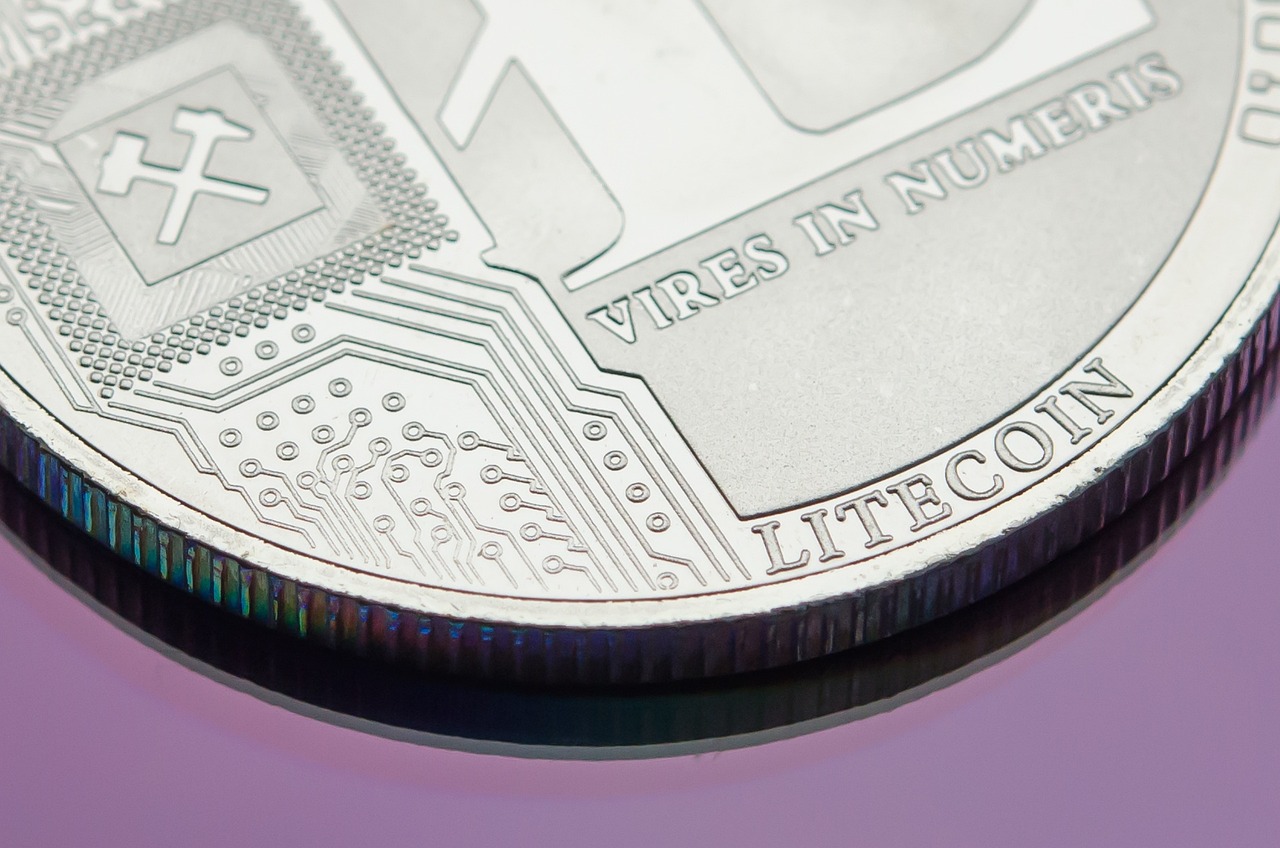
Benefits of Using Reserve Rights
When it comes to the world of cryptocurrency, the term “stablecoin” is often thrown around like confetti at a parade. However, not all stablecoins are created equal. Enter Reserve Rights, a decentralized stablecoin that is designed not just to maintain value, but to empower individuals and communities alike. Imagine having a financial tool that not only shields you from the wild price swings typical of cryptocurrencies but also enhances your control over your assets. Sounds appealing, right? Let’s dive into the myriad benefits that make Reserve Rights a standout choice in the crowded crypto marketplace.
First and foremost, one of the most significant advantages of using Reserve Rights is its ability to foster financial inclusion. In a world where traditional banking services are often inaccessible to many, Reserve Rights opens the door to a decentralized financial system. This means that anyone with an internet connection can participate in the economy without the barriers typically imposed by banks. Think of it as having a global bank account in your pocket, available to anyone, anywhere, at any time.
Moreover, Reserve Rights significantly reduces volatility. Unlike other cryptocurrencies that can experience drastic price fluctuations within hours, Reserve Rights is designed to maintain a stable value. This stability is crucial for users who want to transact without the fear of sudden losses. Imagine trying to buy groceries with a currency that could drop in value overnight – it’s a recipe for disaster! With Reserve Rights, users can enjoy peace of mind knowing their assets are secure.
Another compelling benefit is the enhanced user control over assets. In traditional financial systems, users often have to rely on intermediaries, which can lead to delays and additional fees. However, Reserve Rights operates on a decentralized model, allowing users to manage their assets directly. This means quicker transactions, lower fees, and most importantly, the power to control one’s own financial destiny. It’s like being the captain of your own ship rather than being at the mercy of a larger vessel's crew.
Additionally, Reserve Rights promotes transparency in its operations. The underlying technology is built on blockchain, which means every transaction is recorded and can be publicly verified. This level of transparency not only builds trust among users but also deters fraudulent activities. In a landscape where scams and hacks are all too common, having a transparent system is like having a lighthouse guiding you safely to shore.
Finally, the community-driven aspect of Reserve Rights adds another layer of benefit. Users are not just passive participants; they have a say in the governance of the platform. This means that decisions affecting the ecosystem are made collectively, ensuring that the interests of the community are prioritized. It’s akin to living in a neighborhood where everyone has a voice in how things are run, rather than being dictated by a distant authority.
In summary, the benefits of using Reserve Rights extend far beyond mere financial transactions. From promoting financial inclusion and reducing volatility to enhancing user control, transparency, and community governance, Reserve Rights is truly a stablecoin for the people. As the cryptocurrency landscape continues to evolve, it’s exciting to think about how tools like Reserve Rights can redefine our relationship with money.
- What is Reserve Rights? Reserve Rights is a decentralized stablecoin designed to provide financial stability and empower users globally.
- How does Reserve Rights maintain its stability? It uses a dual-token system that helps stabilize its value against fiat currencies.
- Can anyone use Reserve Rights? Yes, anyone with an internet connection can access and use Reserve Rights, promoting financial inclusion.
- What are the governance mechanisms in place? The platform incorporates community participation, allowing users to have a say in important decisions.
- Is Reserve Rights safe to use? Yes, it operates on a transparent blockchain, which enhances security and trust among users.

Challenges Faced by Reserve Rights
While Reserve Rights presents an innovative approach to stablecoins, it is not without its challenges. The cryptocurrency landscape is like a wild jungle, teeming with both opportunities and threats. One of the most pressing issues facing Reserve Rights is the regulatory environment. As governments around the world scramble to establish frameworks for cryptocurrencies, projects like Reserve Rights must navigate a complex web of compliance requirements. This uncertainty can stifle innovation and slow down adoption, leaving users and developers in a state of limbo.
Moreover, the stablecoin market is becoming increasingly competitive. Established players like Tether and USDC dominate the scene, boasting significant market capitalizations and user trust. Reserve Rights must carve out its niche by offering unique features and benefits that can attract users away from these giants. This competition is akin to a high-stakes race, where only the most agile and innovative can thrive.
Technological limitations also pose a challenge for Reserve Rights. The underlying technology must be robust enough to handle a growing user base while ensuring security and efficiency. Any vulnerabilities could lead to significant financial losses and damage to the project's reputation. In this digital age, where information travels at lightning speed, a single incident can tarnish the perception of a cryptocurrency.
In addition to these challenges, Reserve Rights needs to build and maintain a strong community. Community engagement is vital for decentralized projects, as it fosters trust and encourages active participation. Without a dedicated user base, even the best technology can falter. Therefore, Reserve Rights must focus on outreach and education to ensure that potential users understand the benefits and workings of the platform.
To summarize, the challenges faced by Reserve Rights include:
- Regulatory hurdles: Navigating complex compliance requirements.
- Market competition: Standing out among established stablecoins.
- Technological limitations: Ensuring robust and secure infrastructure.
- Community engagement: Building and maintaining a loyal user base.
Addressing these challenges will require a combination of strategic planning, community involvement, and technological innovation. If Reserve Rights can successfully navigate these hurdles, it has the potential to become a significant player in the stablecoin market, offering a decentralized financial instrument that truly empowers individuals and communities.
Q1: What is Reserve Rights?
A1: Reserve Rights is a decentralized stablecoin designed to provide a stable financial instrument for individuals and communities, aiming to create a more inclusive financial system.
Q2: How does Reserve Rights maintain its stability?
A2: Reserve Rights employs a dual-token system that works together to maintain price stability against fiat currencies.
Q3: What are the main challenges faced by Reserve Rights?
A3: The main challenges include regulatory hurdles, market competition, technological limitations, and the need for strong community engagement.
Q4: Why are stablecoins important?
A4: Stablecoins provide a stable value in the volatile cryptocurrency market, enabling users to transact without the fear of sudden price fluctuations.
Q5: What is the future outlook for Reserve Rights?
A5: The future of Reserve Rights looks promising, with potential for growth through strategic partnerships and increased user adoption.
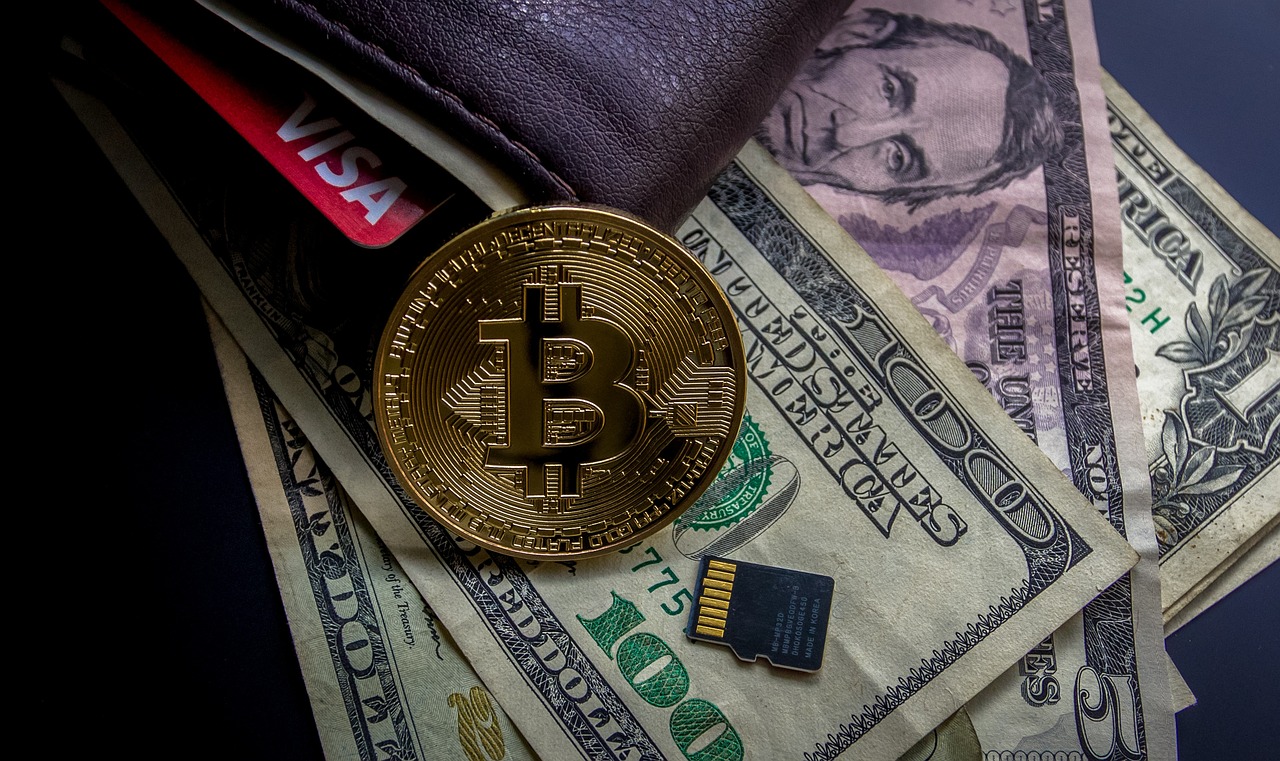
Regulatory Landscape
The for cryptocurrencies, including stablecoins like Reserve Rights, is a complex and ever-evolving arena. Governments and regulatory bodies worldwide are grappling with how to manage the rapid growth of digital currencies while ensuring consumer protection and financial stability. This balancing act can often feel like walking a tightrope; on one side, there's the need for innovation and financial inclusion, and on the other, the necessity of oversight to prevent fraud and maintain market integrity.
In many jurisdictions, stablecoins are being scrutinized due to their potential to disrupt traditional financial systems. For Reserve Rights, this means navigating a patchwork of regulations that can differ significantly from one country to another. Some key regulatory concerns include:
- Consumer Protection: Regulators are focused on ensuring that users of stablecoins are protected from fraud and market manipulation.
- AML/KYC Compliance: Anti-Money Laundering (AML) and Know Your Customer (KYC) regulations are critical to prevent illicit activities.
- Tax Implications: How transactions involving stablecoins are taxed can vary, leading to confusion among users and businesses.
Moreover, the regulatory environment is not static. New policies and guidelines are regularly introduced, making it essential for projects like Reserve Rights to stay agile and adaptable. For example, recent discussions in the European Union about the Markets in Crypto-Assets (MiCA) regulation could set significant precedents for how stablecoins are treated. These regulations aim to create a comprehensive framework that could help legitimize stablecoins while ensuring they operate within the bounds of the law.
It's also worth noting that the regulatory landscape can impact market sentiment. Positive regulatory developments can lead to increased adoption and investment, while stringent regulations may stifle innovation and push projects to more favorable jurisdictions. For Reserve Rights, the ability to communicate effectively with regulators and demonstrate compliance will be crucial for its long-term success.
As the regulatory landscape continues to evolve, it is vital for users and investors to stay informed. Understanding the implications of regulations on Reserve Rights not only helps in making informed decisions but also fosters a sense of trust in the system. In this fast-paced world of cryptocurrency, knowledge is power, and staying ahead of regulatory changes can be the difference between success and failure.
- What is Reserve Rights?
Reserve Rights is a decentralized stablecoin designed to provide a stable financial instrument for individuals and communities.
- How does Reserve Rights ensure stability?
It utilizes a dual-token system that works together to maintain its value against fiat currencies.
- What are the main challenges faced by Reserve Rights?
Challenges include regulatory hurdles, market competition, and technological limitations.
- Why is the regulatory landscape important for Reserve Rights?
Understanding regulations helps ensure compliance, fosters trust, and can influence market sentiment and adoption rates.

Market Competition
The landscape of stablecoins is rapidly evolving, and Reserve Rights is entering a crowded arena filled with established players like Tether (USDT), USD Coin (USDC), and Binance USD (BUSD). Each of these cryptocurrencies has carved out a niche, offering varying degrees of reliability, liquidity, and user trust. But what does this mean for Reserve Rights? How does it plan to stand out in such a competitive market? Well, let’s dive into the dynamics at play.
First, it's essential to recognize that the stablecoin market isn't just about maintaining a peg to the US dollar. It's also about trust and transparency. Many users are increasingly looking for alternatives that not only provide stability but also align with their values. This is where Reserve Rights has a unique opportunity. By promoting decentralization and community governance, it appeals to those who are wary of traditional financial systems and centralized entities. In a world where users are more informed and cautious, the emphasis on community-driven initiatives can be a game-changer.
Another important factor in this competitive landscape is the technological edge. While many stablecoins rely on traditional collateralization methods, Reserve Rights utilizes a dual-token system that enhances its resilience against market fluctuations. This innovative approach not only helps maintain stability but also offers users a more flexible and engaging experience. For example, the Reserve token (RSV) is designed to be stable, while the Reserve Rights token (RSR) acts as a utility token that incentivizes users to participate in the ecosystem. This dual mechanism can potentially attract a diverse user base, from casual investors to crypto enthusiasts looking for a robust financial tool.
However, competition is fierce, and Reserve Rights must also contend with the established reputations of its rivals. Tether, for instance, has been around since 2014 and boasts a significant market share. USD Coin has gained traction due to its backing by reputable financial institutions, while Binance USD benefits from the vast user base of the Binance exchange. To effectively compete, Reserve Rights needs to not only communicate its unique value proposition clearly but also demonstrate its reliability through consistent performance and transparency.
In addition to these factors, regulatory compliance is a major concern that affects all players in the stablecoin space. As governments around the world tighten regulations on cryptocurrencies, Reserve Rights must ensure it adheres to legal standards while maintaining its decentralized ethos. This balancing act will be crucial for its long-term viability in the market. The ability to navigate these regulations effectively can set Reserve Rights apart from its competitors, fostering trust among users who are increasingly cautious about compliance issues.
Ultimately, the market competition for Reserve Rights is both a challenge and an opportunity. By leveraging its unique features, focusing on community engagement, and navigating regulatory hurdles, it can carve out a significant position in the stablecoin ecosystem. The key will be to remain agile and responsive to market demands while maintaining a clear vision of its mission to empower individuals and communities with a stable financial instrument.
- What is Reserve Rights? Reserve Rights is a decentralized stablecoin designed to provide a stable financial instrument for individuals and communities.
- How does Reserve Rights differ from other stablecoins? It utilizes a dual-token system that enhances stability and user engagement, promoting decentralization and community governance.
- What challenges does Reserve Rights face? Regulatory hurdles, market competition, and technological limitations are some of the challenges it must address.
- Can Reserve Rights compete with established stablecoins? Yes, by leveraging its unique features and focusing on community trust and regulatory compliance.

The Future of Reserve Rights
As we gaze into the crystal ball of cryptocurrency, the future of Reserve Rights appears both promising and dynamic. The financial landscape is evolving rapidly, and Reserve Rights is poised to play a significant role in this transformation. With its innovative approach to stablecoins, it not only aims to provide a reliable financial instrument but also seeks to empower individuals and communities globally. But what does this mean for the future? Let's explore some key aspects that could shape the trajectory of Reserve Rights.
First and foremost, the adoption trends we are witnessing today are a clear indicator of the growing acceptance of decentralized financial systems. As more people become aware of the benefits of stablecoins, Reserve Rights could see a surge in user engagement. The increasing demand for stable assets in the crypto market is a reflection of the broader shift towards financial inclusion. Individuals in underbanked regions are particularly drawn to solutions that offer stability and accessibility. Reserve Rights is uniquely positioned to cater to this demographic, providing them with a tool that can help them manage their finances more effectively.
Moreover, the potential for strategic collaborations cannot be overstated. As Reserve Rights navigates its path forward, forming partnerships with established financial institutions and tech companies could enhance its credibility and utility. Imagine a scenario where Reserve Rights integrates with popular payment platforms, allowing users to transact easily with a stablecoin that they trust. Such collaborations could not only boost adoption but also streamline the process of using cryptocurrencies in everyday transactions.
Additionally, the technological advancements in blockchain and decentralized finance (DeFi) are likely to create new opportunities for Reserve Rights. As the ecosystem matures, innovations such as layer-2 scaling solutions and cross-chain interoperability could enhance the functionality of Reserve Rights, making it more attractive to users. The ability to seamlessly transfer value across different blockchain networks could open up a world of possibilities, allowing users to leverage their assets in ways that were previously unimaginable.
However, with great potential comes great responsibility. Reserve Rights will need to navigate the regulatory landscape carefully. Governments and regulatory bodies across the globe are still grappling with how to approach cryptocurrencies, and this uncertainty can pose challenges. Engaging proactively with regulators and ensuring compliance will be essential for Reserve Rights to gain widespread acceptance. By fostering a transparent and cooperative relationship with authorities, Reserve Rights can help pave the way for a more stable regulatory environment that benefits everyone.
In conclusion, the future of Reserve Rights is filled with opportunities, but it also requires a strategic approach to overcome challenges. The combination of increasing adoption, potential collaborations, technological advancements, and careful navigation of regulations will be crucial in determining its success. As we move forward, it will be fascinating to see how Reserve Rights evolves and adapts to the ever-changing landscape of the cryptocurrency market.
- What is Reserve Rights? Reserve Rights is a decentralized stablecoin designed to provide a stable financial instrument for individuals and communities.
- How does Reserve Rights maintain its stability? It employs a dual-token system that works together to ensure value stability against fiat currencies.
- What are the benefits of using Reserve Rights? Benefits include financial inclusion, reduced volatility, and enhanced user control over assets.
- What challenges does Reserve Rights face? Challenges include regulatory hurdles, market competition, and technological limitations.
- What does the future hold for Reserve Rights? The future may include increased adoption, strategic partnerships, and technological advancements.
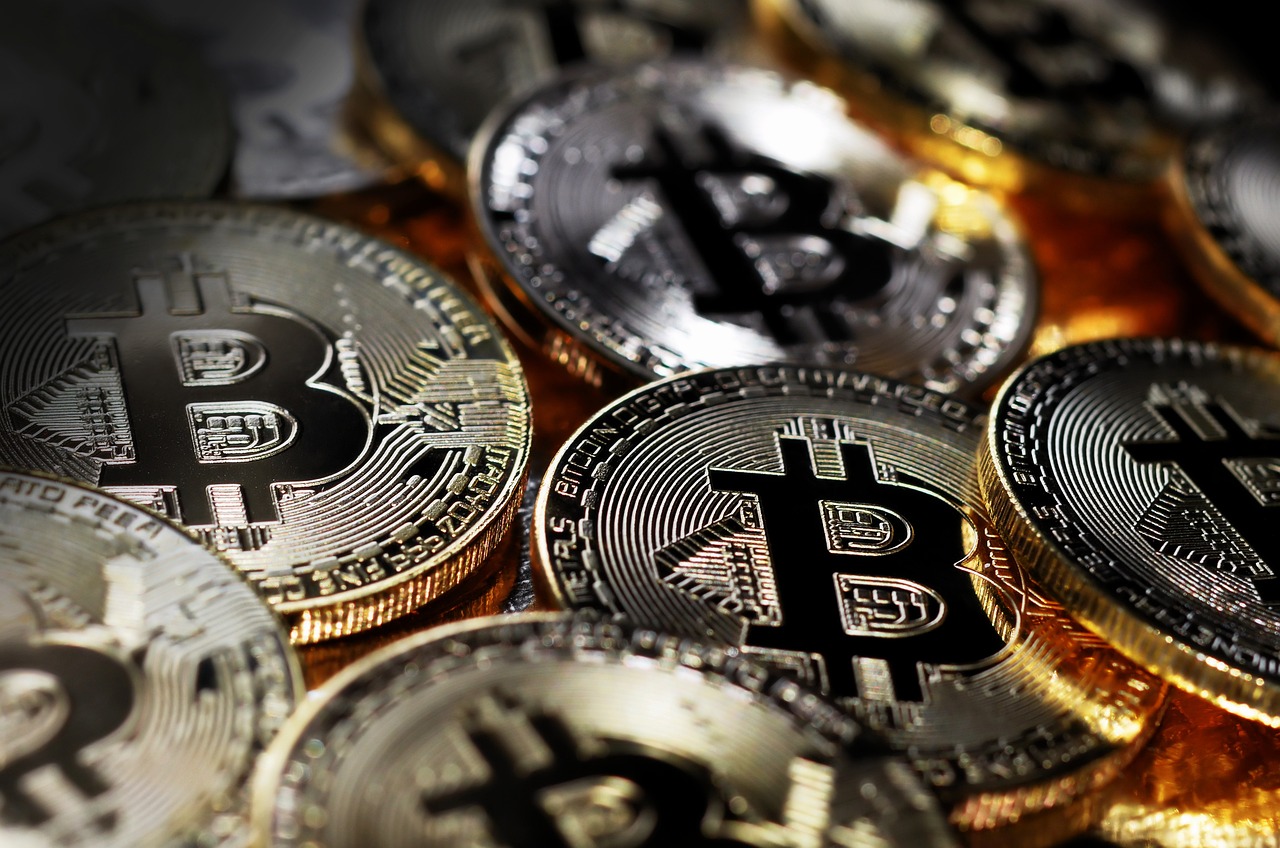
Adoption Trends
When we talk about the of Reserve Rights, it's like watching a thrilling movie unfold right before our eyes. The world of cryptocurrency is constantly evolving, and Reserve Rights is no exception. With its unique proposition of a decentralized stablecoin, it has begun to capture the attention of various user groups, from tech-savvy millennials to traditional investors seeking stability in a volatile market.
One of the most exciting aspects of Reserve Rights is its ability to appeal to individuals who have previously been excluded from the financial system. Imagine a world where anyone, regardless of their background, can access a stable financial instrument without the constraints of traditional banking. This is where Reserve Rights shines, as it offers a pathway to financial inclusion for many. In regions where banking infrastructure is lacking, or where inflation rates are soaring, the demand for a stablecoin like Reserve Rights can be particularly pronounced.
Additionally, the rise of decentralized finance (DeFi) has significantly contributed to the adoption trends of Reserve Rights. As more users flock to DeFi platforms looking for alternatives to traditional finance, they are increasingly seeking stablecoins to mitigate risks associated with price volatility. Reserve Rights stands out in this crowded space due to its dual-token system, which not only provides stability but also empowers users with greater control over their assets.
To give you a clearer picture, let’s take a look at some of the key adoption trends:
- Increased User Engagement: The number of active users engaging with Reserve Rights has been steadily rising, indicating a growing interest in its offerings.
- Collaborations and Integrations: Partnerships with DeFi platforms and wallets are enhancing the visibility and usability of Reserve Rights.
- Educational Initiatives: Efforts to educate potential users about the benefits of stablecoins and decentralized finance are crucial for driving adoption.
Moreover, the community around Reserve Rights is vibrant and engaged. Users are not just passive participants; they are actively contributing to discussions about the future of the platform. This community-driven approach fosters a sense of ownership and loyalty, which can be pivotal for long-term adoption. The governance mechanisms in place allow users to have a say in the decision-making process, making them feel invested in the success of Reserve Rights.
As we look towards the future, the adoption trends of Reserve Rights appear promising. The combination of financial inclusion, the rise of DeFi, and an engaged community creates a fertile ground for growth. However, it’s essential to keep an eye on the broader market dynamics and how they will influence this trajectory. The world of cryptocurrency is unpredictable, but one thing is clear: Reserve Rights is positioning itself as a strong contender in the stablecoin arena.
- What is Reserve Rights?
Reserve Rights is a decentralized stablecoin designed to provide a stable financial instrument for individuals and communities. - How does Reserve Rights maintain stability?
It utilizes a dual-token system to balance supply and demand, ensuring that its value remains stable against fiat currencies. - Who can benefit from using Reserve Rights?
Anyone looking for a stable financial instrument, especially those in regions with limited access to traditional banking services. - What role does the community play in Reserve Rights?
The community is actively involved in governance, allowing users to participate in decision-making processes that affect the platform.
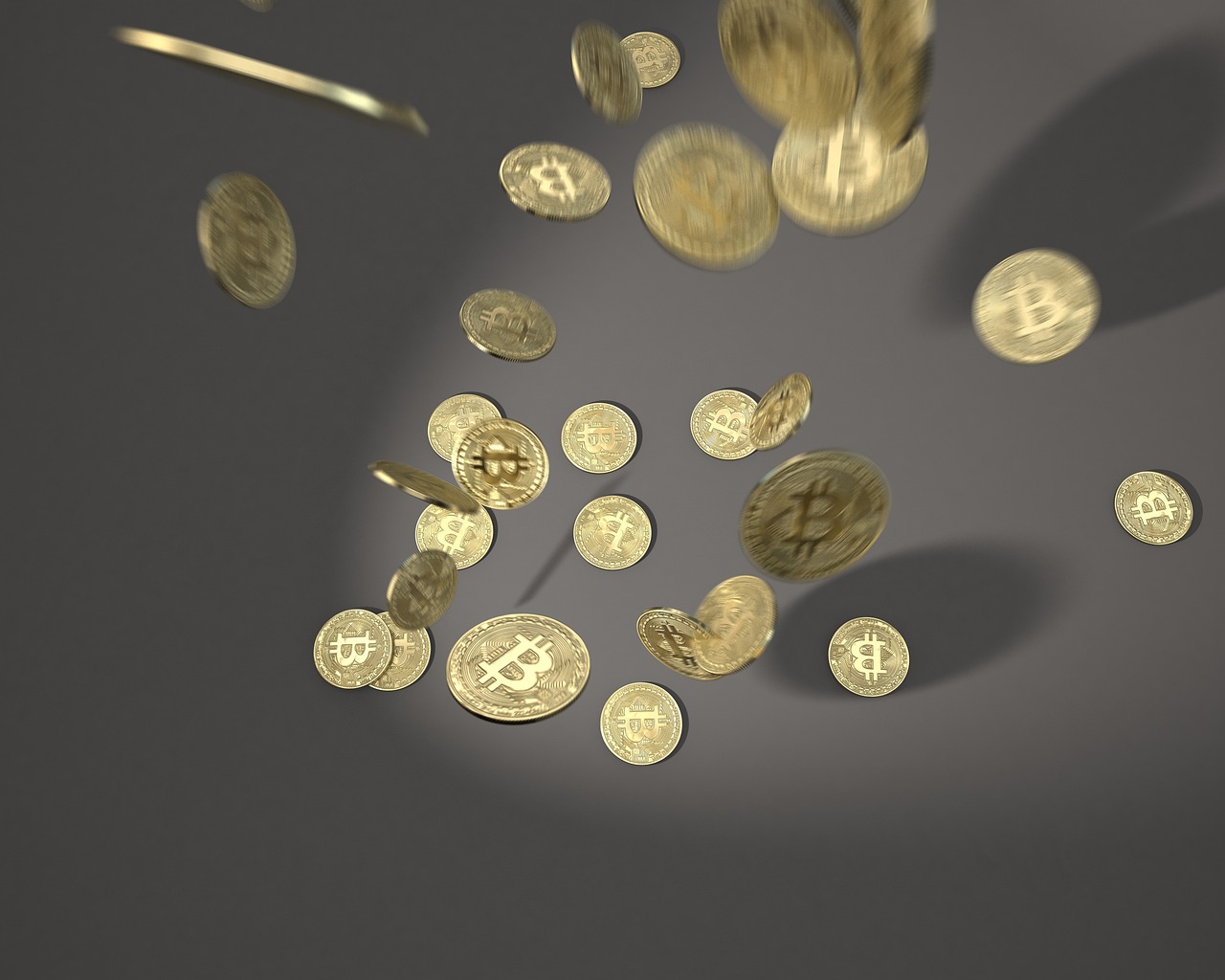
Potential Collaborations
As the landscape of digital finance continues to evolve, Reserve Rights stands at a pivotal moment where strategic partnerships could significantly enhance its utility and adoption. Imagine the impact of joining forces with established financial institutions or tech companies that already have a robust infrastructure in place. These collaborations could serve as a bridge, connecting traditional finance with the innovative world of decentralized finance (DeFi).
One potential avenue for collaboration is with payment processors. By integrating Reserve Rights into their platforms, these processors could offer users a seamless way to transact using a stablecoin, thus expanding the reach of Reserve Rights. This would not only provide users with the benefits of a stable currency but also attract a broader audience who might be hesitant to dive into the complex world of cryptocurrencies.
Another exciting possibility lies in partnerships with decentralized finance platforms. By collaborating with DeFi protocols, Reserve Rights could enhance liquidity, allowing users to leverage their stablecoin holdings for various financial activities, such as lending or yield farming. Such integrations could lead to innovative financial products that cater to a diverse range of user needs, thereby fostering a more inclusive financial ecosystem.
Moreover, collaborations with regulatory bodies could pave the way for greater acceptance and legitimacy of Reserve Rights. By engaging with regulators, the project can ensure compliance and build trust within the community. This proactive approach could mitigate potential legal hurdles and create a more favorable environment for stablecoin adoption.
To illustrate the potential impact of these collaborations, consider the following table that outlines some possible partners and the benefits of collaboration:
| Potential Partner | Benefit of Collaboration |
|---|---|
| Payment Processors | Increased transaction volume and user base |
| DeFi Platforms | Enhanced liquidity and innovative financial products |
| Regulatory Bodies | Improved compliance and trust in the market |
In conclusion, the future of Reserve Rights could be significantly shaped by these collaborations. By aligning with partners that share a vision for a decentralized financial system, Reserve Rights can not only expand its reach but also enhance its functionality. This could ultimately lead to a more stable and equitable financial landscape for users around the globe.
- What is Reserve Rights? Reserve Rights is a decentralized stablecoin designed to empower individuals and communities by providing a stable financial instrument.
- How does Reserve Rights maintain its stability? Reserve Rights operates on a dual-token system that works together to maintain its value against fiat currencies.
- What are the benefits of using Reserve Rights? Benefits include financial inclusion, reduced volatility, and enhanced user control over assets.
- What challenges does Reserve Rights face? Challenges include regulatory hurdles, market competition, and technological limitations.
- How can I get involved with Reserve Rights? You can participate by using the stablecoin, engaging with the community, or exploring potential collaborations.
Frequently Asked Questions
- What is Reserve Rights?
Reserve Rights is a decentralized stablecoin designed to provide a stable financial instrument for individuals and communities. It aims to empower users by maintaining a stable value against fiat currencies, making it a reliable option in the volatile world of cryptocurrencies.
- How do stablecoins work?
Stablecoins are cryptocurrencies that are pegged to a stable asset, like a fiat currency. This means their value remains relatively constant, which is crucial for users who want to avoid the price swings typical of other cryptocurrencies. They serve as a bridge between traditional finance and the digital economy.
- What makes Reserve Rights unique?
Reserve Rights features a dual-token system that helps maintain its stability. This unique mechanism allows one token to be used for transactions while the other acts as collateral, ensuring that the value remains stable even during market fluctuations.
- What are the benefits of using Reserve Rights?
Using Reserve Rights offers several advantages, such as financial inclusion for unbanked populations, reduced volatility compared to other cryptocurrencies, and enhanced user control over assets. It provides a more stable alternative for individuals looking to engage in the digital economy.
- What challenges does Reserve Rights face?
Like many cryptocurrencies, Reserve Rights encounters challenges such as regulatory hurdles, competition from other stablecoins, and technological limitations. Navigating these issues is essential for its growth and adoption in the broader financial ecosystem.
- How does governance work in Reserve Rights?
Governance in Reserve Rights is community-driven, allowing users to participate in decision-making processes. This decentralized approach ensures that the platform evolves according to the needs and preferences of its users, fostering a sense of ownership and accountability.
- What does the future hold for Reserve Rights?
The future of Reserve Rights looks promising, with potential developments in user adoption and strategic collaborations. As more individuals and organizations recognize the benefits of decentralized finance, Reserve Rights could play a significant role in shaping the future of stablecoins.
- How can I get involved with Reserve Rights?
You can get involved with Reserve Rights by acquiring its tokens through various cryptocurrency exchanges, participating in community discussions, and staying informed about developments in the project. Engaging with the community is a great way to understand its benefits and contribute to its growth.



















